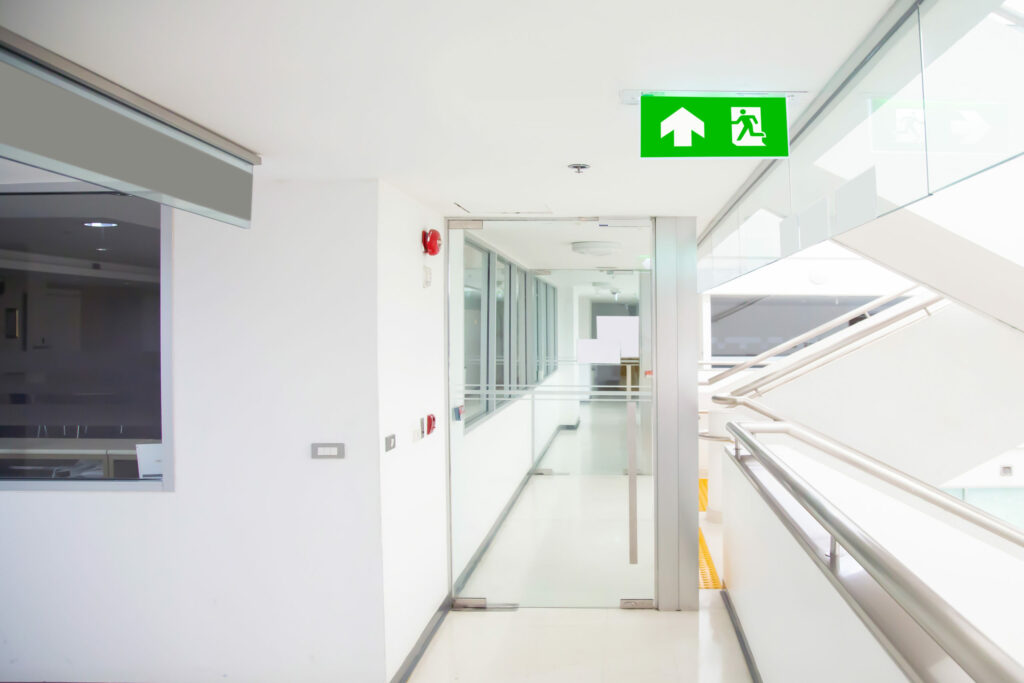
The function of emergency lighting is not to illuminate a building when the power goes out. The role of emergency lighting is to illuminate key areas that are required in an emergency.
Escape routes
Emergency lighting should help people see in any passageways or stairways that lead to exits.
In addition to this, lighting should be used to ensure that people are aware of any changes in direction.
They should also be used to highlight hazards en route that might cause people to trip if they were not made clear. In the dark, when people are trying to leave the area, it is possible for everyday obstacles to become extremely dangerous and even lethal.
Firefighting equipment and first-aid kits
Highlighting firefighting equipment and first aid kits with emergency lighting can help staff or response personnel save lives.
Even if the building policy is that people should head to exit points without tackling fires, regardless of whether or not it seems safe to do so, illuminating firefighting and first aid equipment will be useful to response teams who enter the building.
Open areas or ‘anti-panic’ lighting
This is different from standby lighting. When these lights are on, it is definitely not business-as-usual. The intention is that they illuminate large, open spaces, making people feel safe enough to evacuate the building.
The Firechief range includes high-performance fire extinguishers, fire blankets, first aid kits, lithium-ion fire extinguishers and emergency lighting. For more information, call us on +44 (0)330 999 0019 or email sales@firechiefglobal.com.
The information contained within this blog is provided solely for general informational and educational purposes and is not intended as a substitute for professional advice. Before taking any actions based upon this information, we advise the reader to consult any and all relevant statutory or regulatory guidance and where felt necessary to consult a qualified fire or industry regulation professional. The use or reliance on any information contained herein is solely at the reader’s risk.

